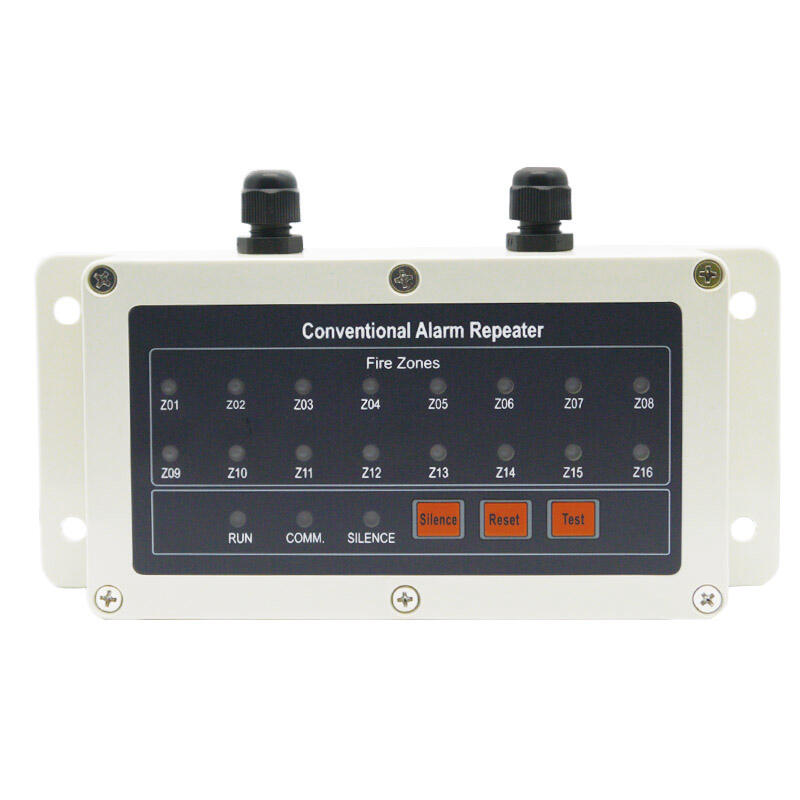A Conventional Alarm Repeater plays a crucial role in fire safety by relaying signals from fire alarm systems to various parts of a site. This function is essential in ensuring that alarm signals are communicated effectively, even to distant or remote areas within a building or site. The relayed signals allow for timely responses to any incidents, significantly enhancing overall safety measures.
These devices consist of several key components, including their circuitry and connectivity features. The circuitry within a conventional alarm repeater is designed to handle communications from the master alarm panel to the repeaters stationed remotely. It includes components like the CFP761 network driver cards that support robust communication over screened two-wire fire-resistant cables. This setup not only ensures secure data relay but also guarantees that the system functions optimally during emergencies.
Moreover, conventional alarm repeaters operate through wired connections to the central fire alarm panel, a setup that ensures reliable data transmission in real-time. This wired infrastructure is critical because it provides a consistent and uninterrupted flow of information, which is vital for emergency response teams. With a typical network cable length not exceeding 1KM, these systems ensure that signals are maintained across vast spaces without loss of data integrity, thus supporting effective fire alarm system installation and operational efficiency.
Conventional alarm repeaters excel in data transmission capabilities, ensuring immediate notification and swift response during emergencies. These devices enable the transmission of various alarm signals such as fire, smoke, and fault alerts. The instant relay of these signals to the central panel and other connected devices is essential for timely emergency management, making them a critical component in complex fire alarm systems. Utilizing technologies like screened two-wire fire-resistant cables, these repeaters guarantee a stable and reliable connection, ensuring minimal loss in data transmission.
Additionally, these repeaters are designed to seamlessly integrate with a wide range of existing fire alarm systems, supporting multiple models and brands. This adaptability ensures consistent performance regardless of the system's specifics, enhancing overall reliability. By aligning effortlessly with systems like those offered by C-TEC, conventional alarm repeaters facilitate a streamlined fire alarm system installation process. Their compatibility allows for a flexible and scalable fire safety network that can expand alongside the growth and needs of the facility, ensuring continual protection and operational efficiency.
Conventional Alarm Repeaters significantly enhance fire safety services by adding redundancy to alarm notifications. This feature is particularly vital in large facilities or complex environments where a single point of failure could lead to disastrous consequences. For instance, in a spacious industrial complex, these repeaters ensure that every alert is communicated multiple times, dramatically increasing the likelihood that a fire event is promptly noticed and acted upon. This redundancy is crucial for maintaining continuous monitoring and immediate responses, ultimately mitigating potential risks.
Moreover, these systems enhance response times during fire emergencies by ensuring that alarms are clearly audible in all areas. This comprehensive coverage reduces the risk of overlooking an alert, especially in busy or noisy environments. By doing so, conventional alarm repeaters play a critical role in facilitating swift evacuations and coordinated responses. They ensure that everyone in the vicinity is aware of the emergency, thus contributing to overall safety protocols and minimizing the impact of fire-related incidents.
Installing conventional alarm repeaters involves several critical steps to ensure optimal functionality. First, selecting the right location is crucial and should be guided by the need for redundancy in alarm notifications. This typically means positioning repeaters in strategic locations across the facility, especially in areas where a fire alarm system installation might not be easily heard. Next, proper wiring procedures must be adhered to, using screened two-wire fire-resistant cables for secure communication. Before completing the installation, compatibility checks with the existing fire alarm system are essential to ensure the repeater can communicate effectively with master control units.
Regular maintenance of conventional alarm repeaters is imperative for continuous operational efficiency. Periodic testing should be conducted to confirm that the alarm system is functioning correctly and providing adequate coverage throughout the facility. Establishing a systematic inspection schedule helps identify and rectify potential faults, ensuring that all components of the fire alarm installation remain in top working condition. Additionally, regular system updates or upgrades may be necessary when new technology becomes available, to maintain compatibility and improve performance. This maintenance approach not only helps in upholding safety standards but also minimizes potential risks associated with outdated equipment.
When exploring the market for conventional fire alarm repeaters, it is essential to consider their specific utility and features. A notable product to explore is the Conventional Fire Alarm Repeater. This versatile device can connect up to four mixture repeaters or ancillary boards to a control panel, catering to extensive fire alarm system setups. Such configurations are ideal for large buildings or facilities that require robust fire alarm installation.

When selecting an alarm repeater, consider additional parameters like signal range, connectivity, and compliance with fire safety standards validated by regulatory bodies. Products like the Conventional Fire Alarm Repeater often include specifications such as operating voltage ranges and environmental protection ratings, crucial for seamless integration into your fire alarm system. These aspects ensure reliable performance and consistent fire safety compliance.

Copyright © 2024 RISOL TECH LTD All Rights Reserved Privacy policy